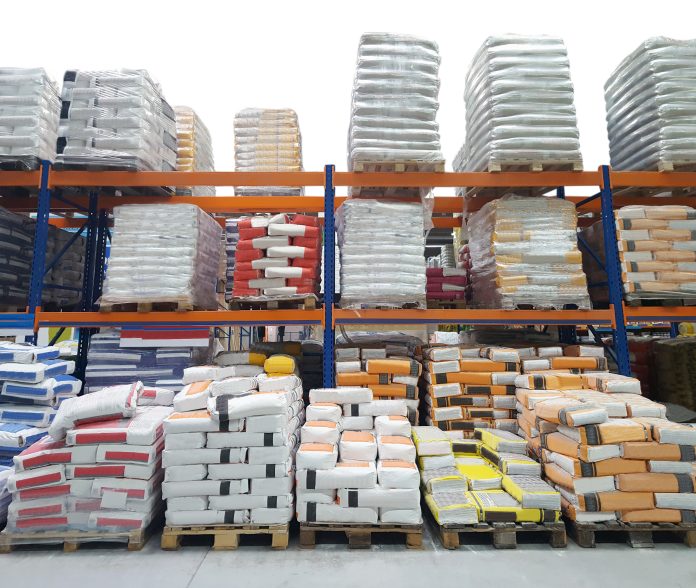With inflation and construction material costs set to be a long-term industry challenge, it is vital that the sector takes concrete steps to minimise risk and protect the resilience of businesses and employees, argues Jeremy Edwards of Arup
Inflation, rising energy costs, labour shortages and supply chain issues are impacting everyone in the UK at the moment.
From supermarket shelves empty of tomatoes and eggs to the rising cost of monthly gas bills, we are experiencing first-hand how supply chains and processes can change our day-to-day lives.
Inflation has added £23bn to the construction sectors output
On an industrial level, these challenges are having significant and widespread consequences.
The volatility of construction material costs, in particular, continues to disrupt the sector, with recent analysis of ONS data showing that inflation added £23bn to the expenses of the sector’s output compared with pre-pandemic levels.
This is likely to be a long-term struggle for the industry.
This means that leaders in the sector must take urgent steps to adapt, to protect not only their individual businesses and employees but their industry.
But currently, we are not thinking strategically enough to meet this goal.
We must be proactive, innovative and deliberate in how we move forward to futureproof the sector and build a system with greater inflation resilience.
One way to achieve this is to adopt an overall approach of “use less material, use fewer people to build, use less energy to operate and maintain”.
This approach happily aligns with the global carbon agenda and can help reduce costs, while also promoting sustainable practices.
Another option is to employ the best conceptual design approach, which involves thoughtful designs that maximise material efficiency and embrace low-carbon materials while considering the availability, supply and construction material costs and labour.
Refurbishments & reuse projects to mitigate construction material costs
We must also consider refurbishments or reuse projects, approaching challenges with circularity and reuse in mind. When we begin new projects, we must also consider how they can adapt and improve with age. In this way, we can help to protect against inflation and ensure the construction industry continues to thrive.
A project that highlights the success of this approach is the Triton repurpose and façade reuse project, which involved repurposing and reusing existing materials to create a new building.
Arup’s work on Triton’s façade represents one of the largest examples of circular economy practices in the industry to date. It required the removal, refurbishment and reinstallation of over 3,000m2 of façade, comprising over 25,000 separate parts.
This approach alone saved over 2,400 tonnes of carbon and represented a 66% cost saving when compared to a new façade. Ultimately, the Triton project exemplifies how opting for refurbishment can save time, money and carbon.
Building inflation resilience into the industry
Long-term thinking that takes into account how to minimise the risk of inflation is also essential.
The current approach to cost planning is either current or retrospective. Without an understanding of how the future will likely impact products and materials, we cannot protect against inflationary risks.
Shifting to a product-based approach with predictive cost modelling, staying aware of market and industry inflationary trends, and considering future costs can help build a strong business that can weather unpredictable economic periods.
Overall, the construction industry must become more thoughtful about how we build, particularly when it comes to material and labour efficiency.
We need to think of buildings as “products” and strive to drive continuous improvement across projects and throughout operation.
This way of thinking will offer adequate protection from inflationary risks and help inflation-resilient businesses to thrive in the short and long term.
While this is a challenging time for the sector and those who work in it, it is also an opportunity for us to build a better, more resilient industry.
By being proactive, innovative and deliberate in how we move forward, we can futureproof the sector and build a resilient system that will serve many generations to come.
Jeremy Edwards
Global and UKIMEA property business leader
Arup
Tel: +44 (0)207 636 1531
buildings@arup.com
www.arup.com
Twitter
Linkedin
Facebook
Instagram








![[VIDEO] Making DorTrak reports easy to read with Fireco Inspecting fire doors at Fireco, firedoor technology, 2023](https://www.pbctoday.co.uk/news/wp-content/uploads/2024/04/JPZ_2364-web-218x150.jpg)
![[VIDEO] Re-flow Field Management review by Traffic Management Installations When TMI began subcontracting for councils and government bodies, they wanted to present their site reporting in a more professional manner](https://www.pbctoday.co.uk/news/wp-content/uploads/2025/03/TMI-Media-1-218x150.png)




